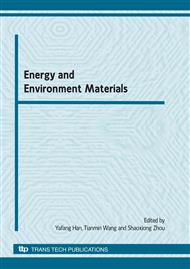p.1
p.9
p.17
p.23
p.28
p.33
p.38
p.47
Analysis of Influencing Factors of CO2 Emissions from Integrated Steelworks Based on LCA
Abstract:
The amount of CO2 emissions from steelworks accounts for a great share of the total CO2 emissions from industry in China. Thus, reducing CO2 emissions from steelworks is urgent for China’s environmental protection and sustainable development. This study aims at identifying factors that influence CO2 emissions from steelworks and proposing measures to reduce CO2 emissions. The life cycle inventory (LCI) of iron and steel products implies the relationship between the CO2 emissions of the steelworks and the input variables of the LCI. The Tornado Chart Tool is utilized to calculate the variation of CO2 emissions caused by the change of each input variables of LCI. Then, mean sensitivity of each input variable is calculated and the ranking criterion developed is used to identify the main factors influencing the integrated steelworks. Subsequently, measures for reducing CO2 emissions are proposed. The results indicate that the very important influencing factors of CO2 emissions in steelworks are the CO2 emission factor of Blast Furnace Gas (BFG), liquid steel unit consumption of continuous casting, continuous casting slab unit consumption of hot rolling and hot metal ratio of steelmaking. Consequently, many efficient measures for reducing CO2 emissions have been proposed, such as removing CO2 contained in BFG, decreasing the hot metal ratio of Basic Oxygen Furnace (BOF), recycling BFG, optimizing the products’ structure, etc.
Info:
Periodical:
Pages:
9-16
Citation:
Online since:
May 2010
Authors:
Price:
Сopyright:
© 2010 Trans Tech Publications Ltd. All Rights Reserved
Share:
Citation:


